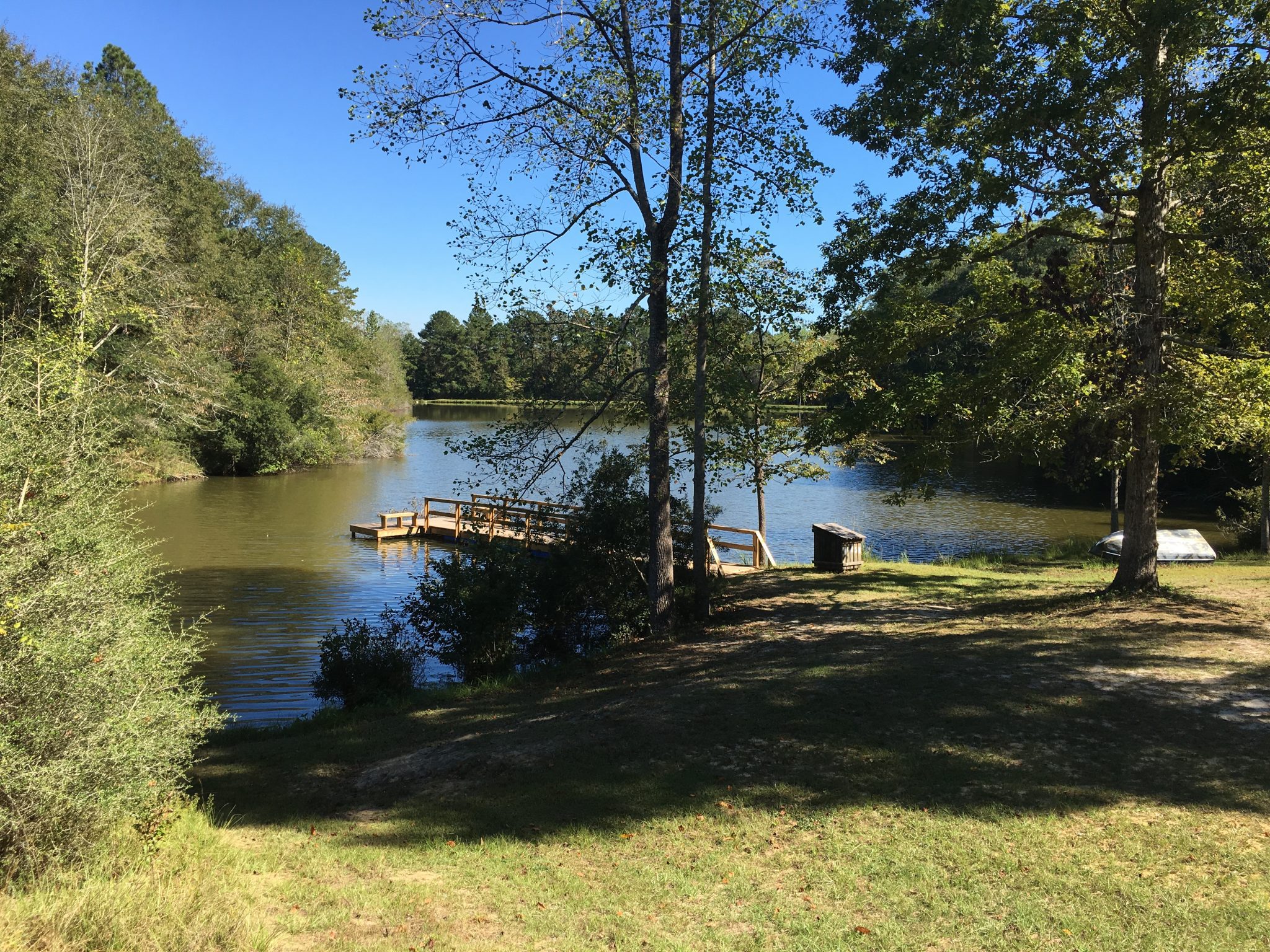Fish & Water

A pond on your property can be an asset–not only as a place to pass time between hunting seasons, but also as a habitat enhancement for wildlife. Year-round benefits include a place to enjoy fishing, the outdoors, and providing a natural water source attraction for wildlife.
Although deer get most of their daily water through the vegetation they consume, they still use water sources such as streams, puddles, and ponds, to obtain their required intake. On the other hand, wild turkeys rely heavily on water sources and remain within close proximity to them. Water sources also provide essential resources for waterfowl feeding, nesting, loafing, and cover.
One way to maximize the attractiveness of your pond for wildlife involves increasing the presence of herbaceous or leafy plants. Promoting grasses and forbs rather than brushy, woody vegetation will provide food sources, nesting, and escape cover. Plus, it offers a buffer for water runoff into the pond. This can improve water quality by filtering excess nutrients and sedimentation from water runoff. This practice also decreases water cloudiness and is more attractive to waterfowl.
Pond owners can manage and encourage beneficial vegetation around your ponds in several ways. Disking every two years, in late fall, deters woody plants and promotes herbaceous plants. These typically have an abundance of seeds providing food for birds. Fire can also be used in place of disking in areas that are not accessible by equipment. Fire and disking also increase the abundance of insects that are an essential food source for developing juvenile turkeys and waterfowl.
Mowing can be effective in preventing growth of nuisance vegetation and reducing dense, continuous vegetation to ensure increased landing area and foraging access. Avoid mowing during the spring and early summer when birds will be using grassy areas for nesting. A selective herbicide application may also be necessary if undesirable or invasive species establish.
Mass-producing plants are a good enhancement around ponds. A variety of species will maximize available food types and sources year-round. Examples of hard-mast, lowland trees that prefer moist, well-drained soil are cherrybark oak (Quercus pagoda), willow oak (Quercus phellos), water oak (Quercus nigra), pin oak (Quercus palustris), chinkapin oak (Quercus muehlenbergii), and swamp chestnut (Quercus michauxii). For areas around your pond that have wet, poorly-drained soils, overcup oak (Quercus lyrata) and nuttall oak (Quercus nuttallii) are great options. Examples of soft-mast species include American persimmon (Diospyros virginiana), crabapple (Malus spp.), pawpaw (Asimina triloba), osage orange (Maclura pomifera), blackberry (Rubus spp.), American beautyberry (Callicarpa americana), sumac (Rhus spp.), and elderberry (Sambucus spp.). Only grassy vegetation should be established on pond dams. Tree roots have the potential to compromise the structural integrity of a dam.
Waterfowl also prefer shallow areas of the pond they can use for wading and foraging. Over time, sediment will collect in upstream areas of the pond, resulting in shallow areas. These shallow areas are forage locations for waterfowl searching for invertebrates.
Pond owners can use drawdowns in these shallow areas to increase the types of aquatic vegetation, which typically have seeds high in nutrients. A drawdown is the practice of gradually decreasing water levels to expose shallow areas of a pond. Vegetation can be permitted to establish naturally, or sufficiently-dried pond bottoms can be disked to encourage vegetation.
Planting species that are beneficial to waterfowl is another option. Examples include species in the genus Sagittaria (i.e., arrowhead or bull tongue and duck potato), sago pondweed (Potamogeton pectinatus), eel grass (Vallisneria spp.), sedges (Carex spp.), cattail (Typha spp.), and wild rice (Zizania spp.).
During a drawdown, landowners will also likely have to manage for undesirable aquatic weed species. If you are in an area where fire ants are common, you will need to manage for this pest. If fire ants can establish, they will form floating balls when water levels begin to rise. Fish may potentially target these floating balls, and ingesting too many fire ants at one time can result in killing the fish. Lastly, during a drawdown, allow at least 50% of the pond to remain with a depth of at least 6 to 7 feet to reduce the chance of fish dying.
Whether your goals are to increase habitat for wildlife, manage your pond for fishing, or a little of both, these practices will maximize the benefit of your pond. Before beginning work, establish the goals for your property and the management strategies that will meet those goals. Contacting your county Extension office or state wildlife biologist is an excellent way to begin the process of getting year-round use of your property’s pond.

